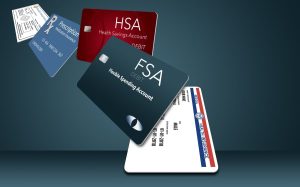In recent years, the widespread use of credit cards has transformed how Americans conduct their daily transactions. From online shopping to in-store purchases, credit cards have become indispensable tools for financial convenience. However, this convenience has also made credit card security and fraud significant concerns.
Protecting sensitive financial information has never been more critical as the rise in cybercrime and sophisticated fraud schemes continue to pose challenges. This article delves into the current landscape of credit card security and fraud in the US, exploring the threats, preventive measures, and the steps individuals and institutions can take to safeguard financial data effectively.
The growing threat of credit card fraud

Credit card fraud in the United States has escalated as digital transactions have become more prevalent. Criminals are exploiting vulnerabilities in financial systems and consumer behavior to commit fraud, leading to substantial financial losses annually. The Federal Trade Commission reported millions of fraud cases in recent years, with a significant portion involving credit cards.
One major contributor to the rise in fraud is technological advancements. While these innovations have made payments more seamless, they have also equipped fraudsters with tools to breach security systems. For instance, skimming devices and sophisticated phishing scams allow criminals to steal card details without physical contact, making it increasingly challenging to detect fraud.
Additionally, the shift towards online shopping has amplified the risk of credit card fraud. E-commerce platforms, though convenient, often become targets for cybercriminals who exploit vulnerabilities in their systems. As more Americans rely on digital shopping, the need for robust security measures has grown exponentially.
Common types of credit card fraud
Credit card fraud manifests in various forms, each posing unique challenges to consumers and financial institutions. Understanding these common fraud types is crucial in developing effective prevention strategies. One prevalent form is unauthorized card use, where stolen card information is used for transactions without the owner’s consent. This can occur due to physical card theft or data breaches that expose card details to malicious actors.
Victims often discover the fraud only after reviewing their statements, making prompt reporting critical. Another widespread type is card-not-present (CNP) fraud, typically associated with online transactions. Since these transactions don’t require a physical card, fraudsters can easily misuse stolen information. E-commerce platforms often bear the burden of ensuring secure transactions to combat this issue.
Identity theft is also a significant concern, where criminals use stolen personal information to apply for new credit cards or take over existing accounts. This type of fraud can have long-lasting effects on a victim’s financial health, making prevention and swift resolution essential.
Technological advancements in credit card security
To counter the increasing threat of fraud, the financial industry has introduced several technological advancements aimed at enhancing credit card security. These innovations have transformed how transactions are processed, making it harder for fraudsters to exploit vulnerabilities.
One of the most notable advancements is the introduction of EMV chip technology. Unlike magnetic stripe cards, which store static data, EMV chips generate unique transaction codes for each purchase. This dynamic data makes it significantly more challenging for fraudsters to replicate or misuse card information.
Tokenization is another critical development in credit card security. This process replaces sensitive card information with a unique identifier or token, which is useless to hackers if intercepted. Tokenization is particularly effective in securing mobile payments and e-commerce transactions.
Moreover, financial institutions are leveraging artificial intelligence (AI) and machine learning to detect and prevent fraud. These technologies analyze transaction patterns in real time, flagging unusual activity and blocking potentially fraudulent transactions. AI’s predictive capabilities have proven invaluable in staying one step ahead of cybercriminals.
The role of consumers in credit card security
While financial institutions play a significant role in safeguarding credit card data, consumers also have a crucial part to play. Awareness and proactive measures can significantly reduce the likelihood of falling victim to fraud. First, monitoring account activity regularly is one of the simplest yet most effective ways to detect fraudulent transactions.
Consumers should review their statements frequently, reporting any suspicious activity immediately to their card issuer. Early detection often prevents further unauthorized use. Second, adopting safe online practices is essential in the digital age. Using secure websites for transactions, avoiding public Wi-Fi when entering sensitive information, and creating strong, unique passwords for online accounts can help protect personal data.
Consumers should also be wary of phishing emails or messages that request card details. Finally, enabling security features like two-factor authentication (2FA) adds an extra layer of protection. Many card issuers and financial platforms offer 2FA, requiring a verification code in addition to a password or PIN. This simple step makes it significantly harder for fraudsters to access accounts, even if they obtain login credentials.
The future of credit card security
As the landscape of credit card fraud continues to evolve, so too must the strategies to combat it. Emerging technologies and innovative solutions are shaping the future of credit card security, offering hope for a safer financial environment.
Biometric authentication is one promising area. Fingerprint scans, facial recognition, and other biometric methods are increasingly being integrated into payment systems. These methods provide a higher level of security by ensuring that only the card owner can authorize transactions.
Blockchain technology also holds potential in enhancing credit card security. By providing a decentralized and tamper-proof ledger, blockchain can reduce the risk of data breaches and unauthorized access. Although still in its infancy, its application in financial systems is expected to grow.
Education and collaboration will also play pivotal roles. Financial institutions, governments, and consumers must work together to address fraud effectively. Awareness campaigns and ongoing education can empower individuals to protect themselves, while collaboration among stakeholders can lead to more robust security measures.
In conclusion, credit card security and fraud remain critical concerns in the US. While technological advancements and consumer awareness have made strides in mitigating risks, the fight against fraud is far from over. By staying informed and adopting proactive measures, both individuals and institutions can contribute to a safer financial landscape, ensuring that the convenience of credit cards is not overshadowed by the threat of fraud.





